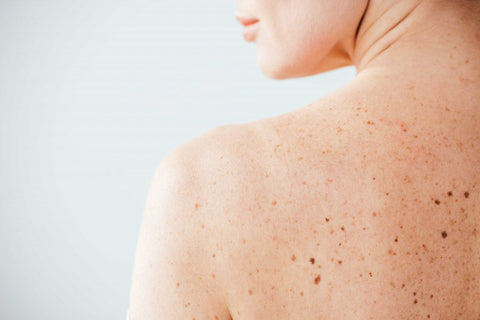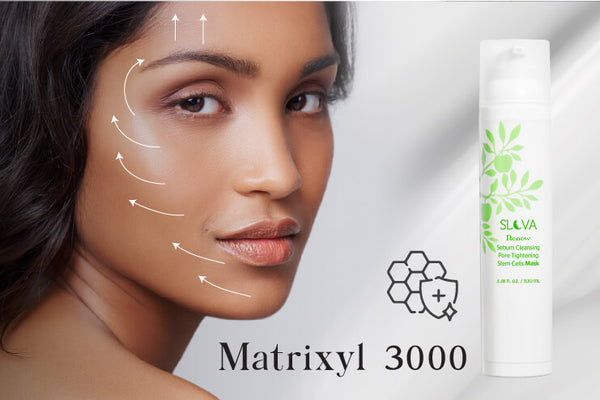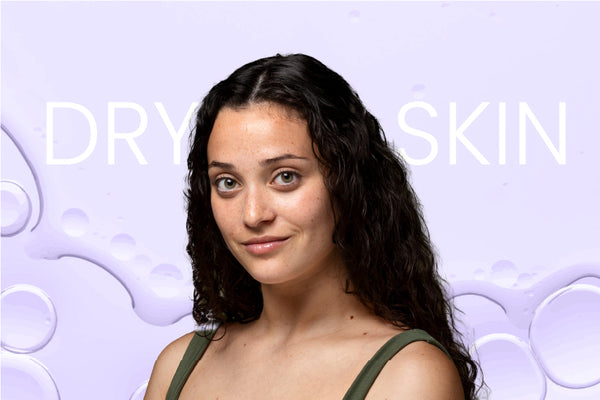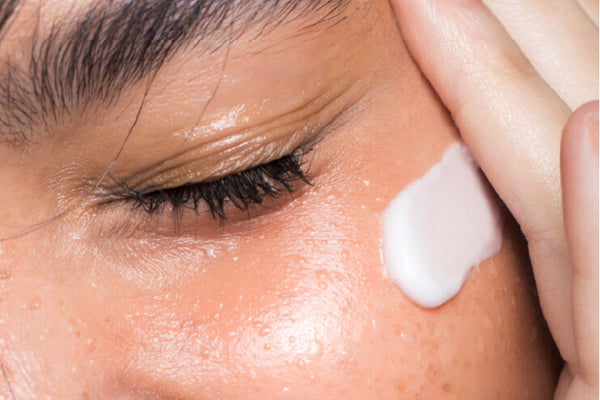Note: "Add 2 products to avail Buy 1 Get 1.
Not Applicable on Combo products."
Know All About Hyperpigmentation: Types, Causes & Treatment

Similar to acne, suntan, fine lines, and wrinkles - hyperpigmentation of the skin is one of the most common skin conditions. You must have come across different patches of skin color on your face, hands, or neck. Sometimes they can be darker than your skin color, while sometimes lighter than your skin color. This condition is called pigmentation of the skin. Hyperpigmentation is the most common type of pigmentation of the skin. Let's talk about it in detail.
What is pigmentation?
In general terms, pigmentation means coloring. Skin pigmentation is something that affects the color of certain parts of the skin. We all have different yet specific skin colors and it is because of a pigment called melanin, which is made by special cells in the skin. When these cells are damaged or become unhealthy, it affects the production of melanin. This pigmentation disorder can either affect your entire body or just patches of the skin.
Mostly, there are two types of pigmentation:
Hyperpigmentation: It is caused when there is an increase in melanin production. In this skin condition, the affected areas become darker than your usual skin color.
Hypopigmentation: It is caused when there is a reduction in melanin production. In this skin condition, the affected areas become white (lighter) to your usual skin color.
Let’s talk about Hyperpigmentation:
It is a harmless skin condition that shows up as spots or specks, darker than your normal skin tone.
Types of Hyperpigmentations:
Sunspots: Sunspots are caused by prolonged exposure to the sun. They are also called liver spots, and they can also cause freckles. They generally appear as spots on the areas exposed to the sun, like the face and hands, and may fade in the winter season.
Melasma: It is believed to be caused by hormonal changes that develop during pregnancy.
It is quite complex and genetics can also play a role in it. They usually appear on the stomach and the face.
Some common triggers of melasma include:
- Sun exposure: It is the most common factor, which in most cases is avoidable by the use of sunscreens.
- Pregnancy hormones: This type of pigment on the skin often fades after a few months after delivery
- Hormone treatments: Taking birth control pills, patches, or rings, or undergoing hormone replacement therapy
Post-inflammatory hyperpigmentation: PIH is the abnormal pigment that appears after the skin has suffered an inflammation or trauma. It usually happens after acne, burns, allergic reactions, eczema, or even after some treatments like chemical peels. PIH usually appears as brown marks where the inflammation has occurred. PIH can even go away in a few weeks, or it can also hang around for years until it is treated.
Treatment of Hyperpigmentation:

While it may seem like a difficult task to deal with hyperpigmentation, it is absolutely treatable. Here are some methods:
Vitamin C: It is considered one of the best treatments for hyperpigmentation. It helps in brightening the skin color and it also evens out the skin tone.
Chemical exfoliants: These are not about your charcoal or fruit scrub... To treat hyperpigmentation, you must use those exfoliants with AHAs and BHAs that will gently exfoliate and remove the pigmented skin cells. Look for those exfoliants with glycolic acid, salicylic acid, lactic acid, citric acid, retinol. Your exfoliators can be in the form of a facial cleanser, toner, serum, or simply an exfoliant.
Sun protection: You must use proper sun protection especially when it comes to treating dark spots. Consistent use of SPF can prevent hyperpigmentation from worsening. Choose a sunscreen with SPF 30 (or greater) with a broad spectrum and try to reapply it throughout the day.
Don’t pick: Squeezing, pinching or picking spots, scabs, and acne on your skin may result in dark spots or make existing ones even worse.
Summing up
Before you proceed to buy products to treat hyperpigmentation, make sure you see your dermatologist and get to know about the hyperpigmentation on your skin, and find out the appropriate treatment plan for the same.
If you have a serious case of hyperpigmentation, then there are options of chemical peels, lasers, microdermabrasion, and microneedling.
Lastly, remember that hyperpigmentation is one of the most common skin problems, so if you’re suffering from it, you’re not alone.


